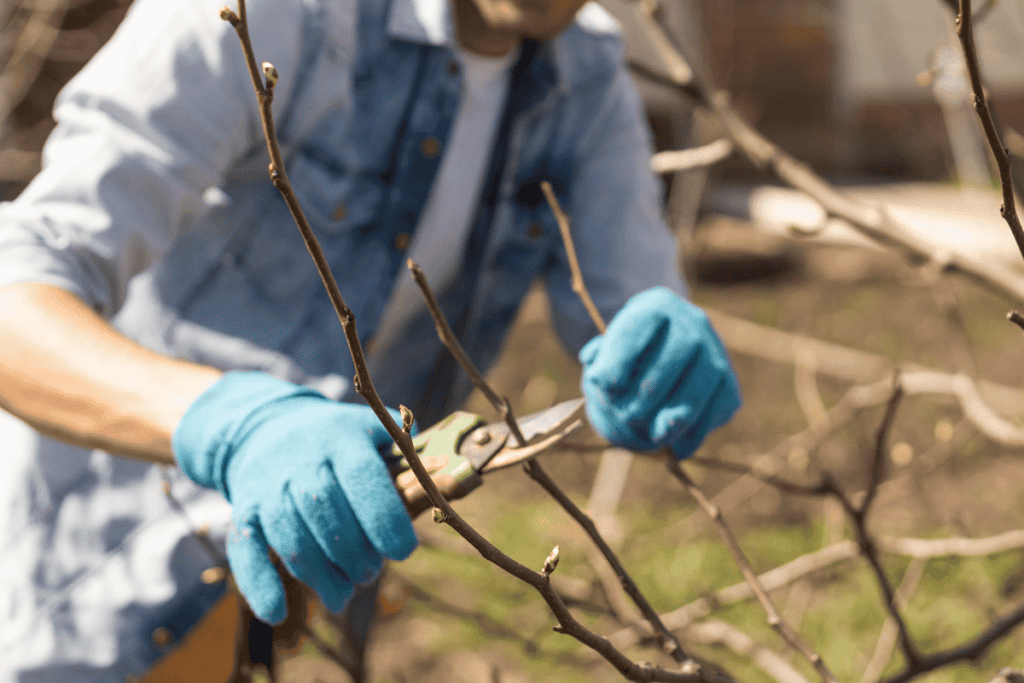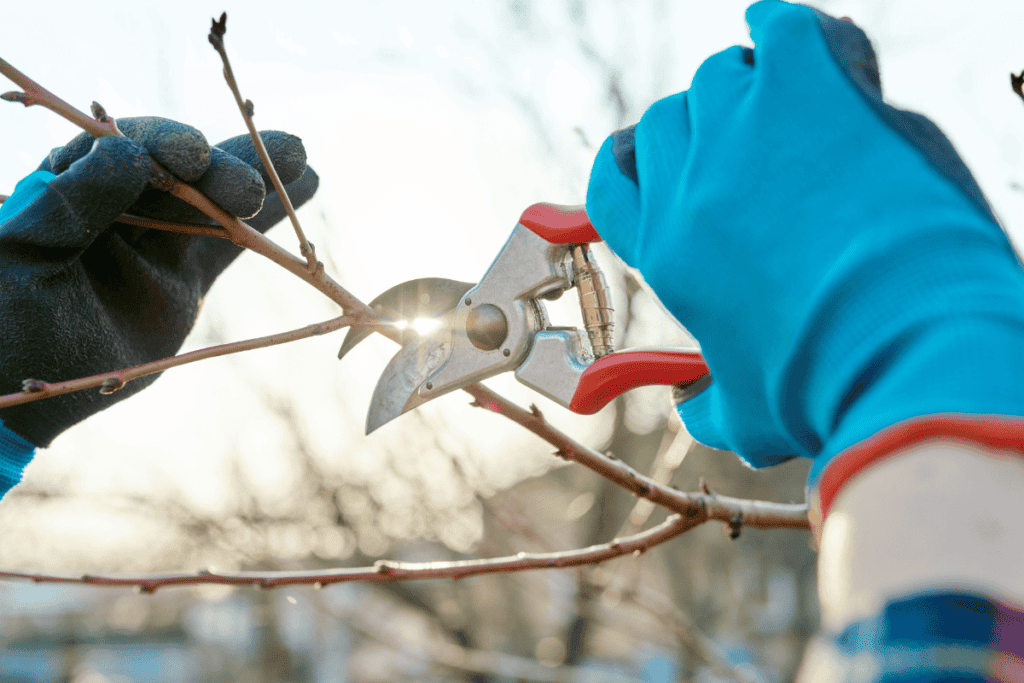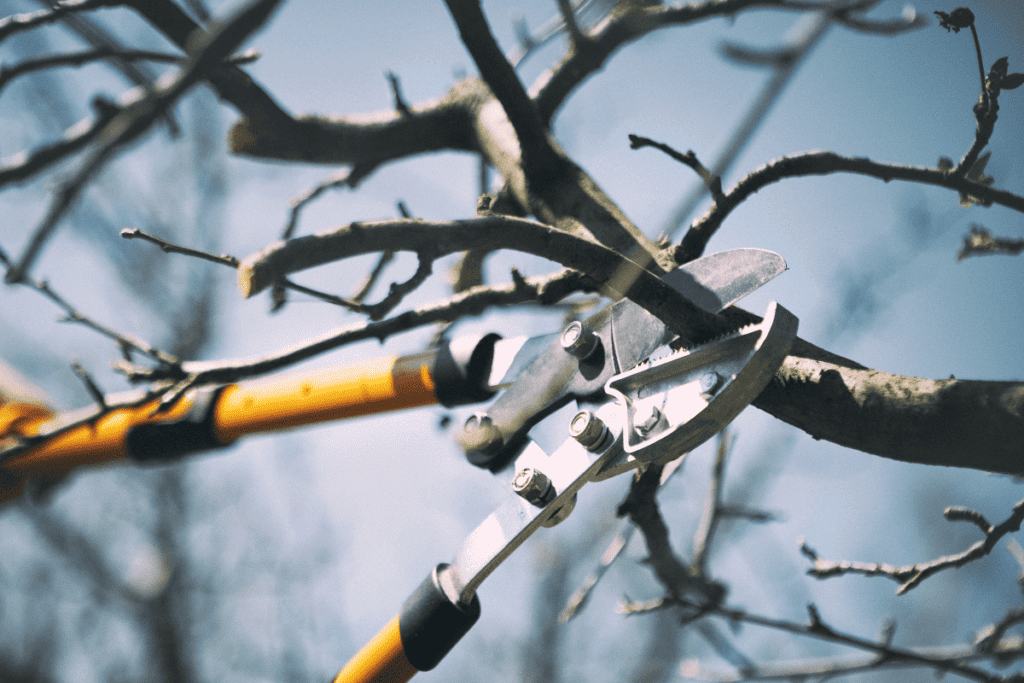Pruning fruit trees is an art that, when mastered, can significantly boost your harvest. Not only does it contribute to the overall health of the tree, but it also maximizes sunlight exposure, enhances air circulation, and helps in managing pests and diseases effectively. In this guide, we’ll explore practical tips for pruning fruit trees to ensure you get the most out of your orchard.
Introduction Pruning fruit trees

Picture this: a flourishing orchard with trees laden with succulent fruits, each branch bending under the weight of the harvest. Achieving this abundance requires more than just planting and watering – it calls for the delicate touch of pruning. Whether you’re a seasoned gardener or a novice with a backyard orchard, our guide on “Tips for Pruning Fruit Trees for Maximum Yield” will equip you with the knowledge to transform your trees into prolific fruit-bearers.
Why Pruning Matters
Pruning goes beyond the cosmetic; it’s a fundamental aspect of maintaining a healthy fruit tree. By removing dead or diseased branches, you allow the tree to direct its energy toward productive growth. Think of it as giving your tree a refreshing makeover, letting it breathe and soak in the sunlight without the burden of unnecessary branches.
Choosing the Right Time for Pruning
Timing is everything in the world of pruning. Spring is often ideal for most fruit trees, but understanding the specific needs of your tree and considering local climate variations is crucial. Pruning during dormant periods ensures minimal stress on the tree and sets the stage for robust growth in the upcoming season.
Essential Tools for Pruning
To embark on your pruning journey, assemble your arsenal of tools. A sharp pair of pruning shears, loppers for thicker branches, and a pruning saw for more substantial cuts are essential. Remember, a blunt tool can do more harm than good, so keep your equipment in top-notch condition.
Understanding Tree Growth Patterns
Each fruit tree variety boasts its unique growth tendencies. Knowing whether your tree exhibits vertical or horizontal growth helps tailor your pruning approach. For instance, an apple tree might require different techniques than a cherry tree. Understanding these growth patterns empowers you to make precise cuts that encourage the desired shape and structure.
Pruning Techniques for Young Trees

Just as children need guidance to grow into well-rounded adults, young trees benefit from strategic pruning. Establishing a sturdy framework during the early years pays off in the long run. Trim competing branches, encourage a central leader, and witness your young tree flourish into a robust producer.
Renewal Pruning for Overgrown Trees
Do you have an older tree that’s seen better days? Renewal pruning is your secret weapon. By selectively removing older branches and encouraging fresh growth, you breathe new life into neglected trees. It’s the horticultural equivalent of turning back time – your tree will thank you with a bountiful harvest.
Dealing with Disease and Pest Control
Pruning isn’t just about shaping; it’s also a proactive measure against diseases and pests. Regularly inspect your tree for signs of trouble and promptly remove affected branches. This not only curtails the spread of issues but also strengthens the tree’s natural defenses.
Thinning Out for Increased Airflow
Imagine a crowded room – it gets stuffy, and the risk of contagion rises. The same principle applies to fruit trees. Thinning out excess branches enhances air circulation, reducing the likelihood of diseases like powdery mildew. It’s like giving your tree a breath of fresh air, quite literally.
Pruning for Maximum Sun Exposure
Fruits love the sun, and your tree does too. Prune strategically to open up the canopy, allowing sunlight to reach all parts of the tree. This not only aids in fruit ripening but also contributes to the overall health of the tree. It’s akin to giving your tree a sunbath – a natural boost for optimal productivity.
The Art of Heading Back
Heading back is the hairstyling of the horticultural world. By shortening branches, you control the height and promote lateral growth. It’s a precise art, much like trimming split ends. The result? A tree that’s not only well-groomed but also flourishing with an abundance of fruit-bearing branches.
Proper Disposal of Pruned Material
As you snip away, don’t forget about the aftermath. Responsible disposal of pruned material is vital to prevent the spread of diseases. Consider composting or chipping branches for mulch – turning the remnants into nourishment for future growth. It’s the circle of life in your orchard.
Post-Pruning Care and Maintenance
Pruning is a rejuvenating experience for your tree, but the recovery process requires attention. Aftercare involves proper watering, fertilization, and a watchful eye for any signs of stress. Think of it as pampering your tree after a spa day – ensuring it emerges vibrant and ready for the next growing season.
Monitoring and Adjusting Pruning Techniques

Trees, like individuals, respond differently to various stimuli. Regularly monitor the effects of your pruning efforts and adjust your techniques accordingly. It’s an ongoing dialogue with your tree, ensuring you provide precisely what it needs for sustained growth and fruitfulness.
Common Pruning Mistakes to Avoid
Avoiding common pruning pitfalls is as crucial as knowing the right techniques. Over-pruning, incorrect cuts, and neglecting the specific needs of your tree can hinder rather than help. Educate yourself on these potential pitfalls, and your orchard will thank you with a thriving bounty.
Conclusion Pruning fruit trees
Pruning fruit trees is an investment in the future – a promise of abundant harvests and healthy trees. As you embark on this journey, remember that each cut is a step towards maximizing your yield. By understanding the intricacies of pruning and embracing the art behind it, you’re not just shaping trees; you’re sculpting a fruitful future for your orchard.
FAQs: Pruning fruit trees
When is the best time to prune fruit trees?
The ideal time for pruning varies by tree type, but generally, it’s during the dormant season, often in late winter or early spring.
How can I prevent disease while pruning my fruit trees?
Regularly inspect your tree for signs of disease, promptly remove affected branches, and sterilize your pruning tools between cuts to prevent the spread of pathogens.
Can I use the pruned branches for anything?
Absolutely! Consider composting or chipping pruned branches for mulch. This recycles the material, providing nutrients for your trees and reducing waste.
How often should I monitor my pruned trees for adjustments?
Regular monitoring is key. Check your trees periodically, especially during the growing season, and adjust your pruning techniques as needed to support optimal growth and fruit production.
Latest Posts
- What Types of Lettuces Can You Grow?

- How to Plant Onion Seeds for Maximum Germination

- How to Plant Parsnip Seeds for Maximum Germination

- How to Plant Mushroom Seeds for Maximum Germination

- How to Plant Lettuce Seeds for Maximum Germination

- How to Plant Kale Seeds: A Step-by-Step Guide to Maximum Germination Success!





